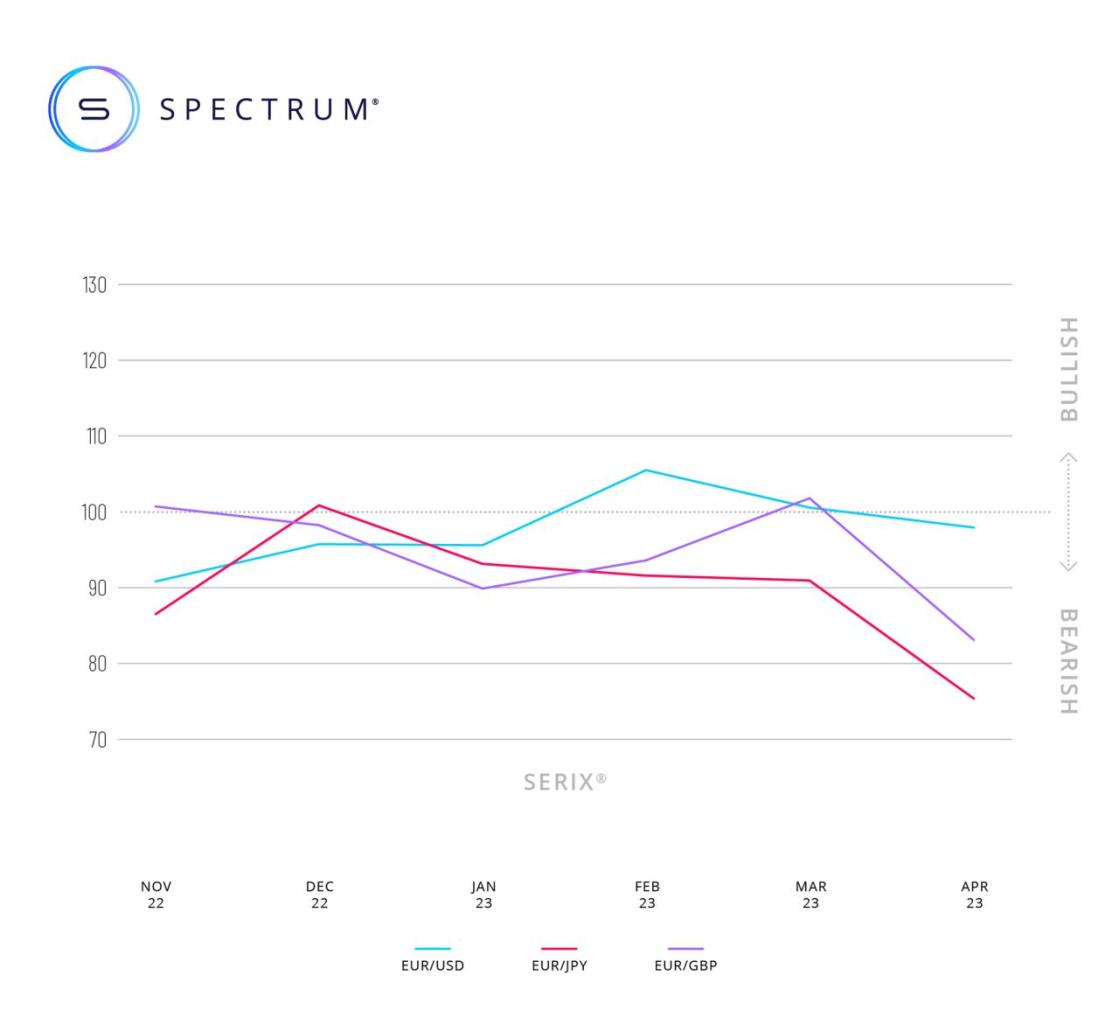• April Euro sentiment index bearish against Pound, Yen and Dollar.
• Short-term retail investor trades run counter to the Euro price overall.
• Mixed market signals lead to higher volatility.

Spectrum Markets (“Spectrum”), the pan-European trading venue for securitised derivatives, has published its SERIX sentiment data for European retail investors for April. Perhaps surprisingly it shows retail investors were bearish towards the Euro against three key currency pairs: US Dollar, Yen and Pound Sterling, with traders selling or taking short positions on derivatives linked to EUR/USD, EUR/JPY and EUR/GBP. For April the three pairs recorded SERIX values of 99, 76 and 83, respectively.
The SERIX value indicates retail investor sentiment, with a number above 100 marking bullish sentiment, and a number below 100 indicating bearish sentiment. (See below for more information on the methodology).
“The outlook for European businesses remains mixed, with industrials and construction firms seeing more optimism, while sentiment has deteriorated somewhat among service providers, and in the retail sector. Alongside this, some questions remain around the extent of likely further rate rises from the European Central Bank,” says Michael Hall, Head of Distribution at Spectrum Markets.
“This combination of factors could be behind retail investors’ bearish stance towards the Euro, as revealed in April’s SERIX: trading near-term price movements while the Euro strengthens overall. Looking ahead, we can expect to see continued movement in the Euro price against major currencies, and an evolving sentiment picture, as investors digest global market factors. These include hopes for a less restrictive U.S. monetary policy, further increases in key interest rates by the ECB and the mood towards financial markets as a whole”, explains Michael Hall.
In April 2023, 122.3 million securitised derivatives were traded on Spectrum, with 34.7% of trades taking place outside of traditional hours (i.e., between 17:30 and 9:00 CET).
76.4% of the traded derivatives were on indices, 4% on commodities, 18.2% on currency pairs, 1.2% on equities and 0.2% on cryptocurrencies, with the top three traded underlying markets being S&P 500 (24.2%), DAX 40 (21.6%), and NASDAQ 100 (18.4%).
Looking at the SERIX data for the top three underlying markets, the S&P 500 decreased from 99 to 97, the DAX 40 improved slightly but remained bearish at 99, and the NASDAQ 100 shifted from a bearish 98 to a bullish 101.

Calculating SERIX data
The Spectrum European Retail Investor Index (SERIX), uses the exchange’s pan-European trading data to shed light on investor sentiment towards current development in financial markets.
The index is calculated on a monthly basis by analysing retail investor trades placed and subtracting the proportion of bearish trades from the proportion of bullish trades, to give a single figure (rebased at 100) that indicates the strength and direction of sentiment:
SERIX = (% bullish trades – % bearish trades) + 100
Trades where long instruments are bought and trades where short instruments are sold are both considered bullish trades, while trades where long instruments are sold and trades where short instruments are bought are considered bearish trades. Trades that are matched by retail clients are disregarded. (For a detailed methodology and examples, please visit this link).
Tradersdna is a leading digital and social media platform for traders and investors. Tradersdna offers premiere resources for trading and investing education, digital resources for personal finance, market analysis and free trading guides. More about TradersDNA Features: What Does It Take to Become an Aggressive Trader? | Everything You Need to Know About White Label Trading Software | Advantages of Automated Forex Trading









